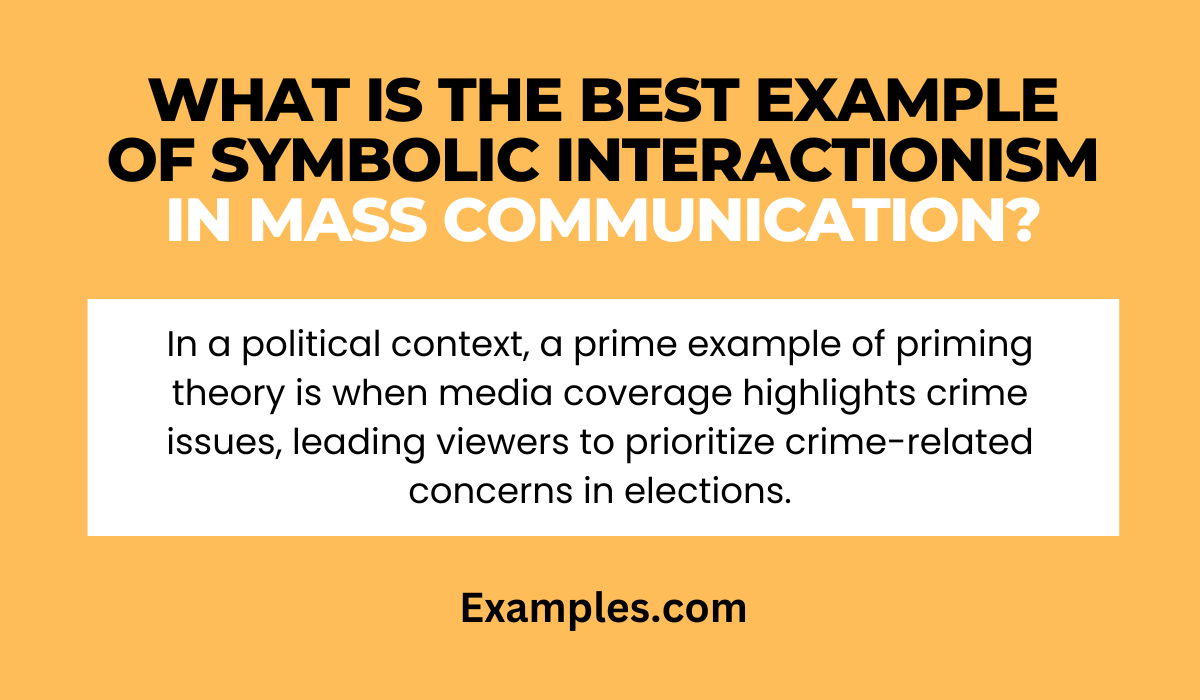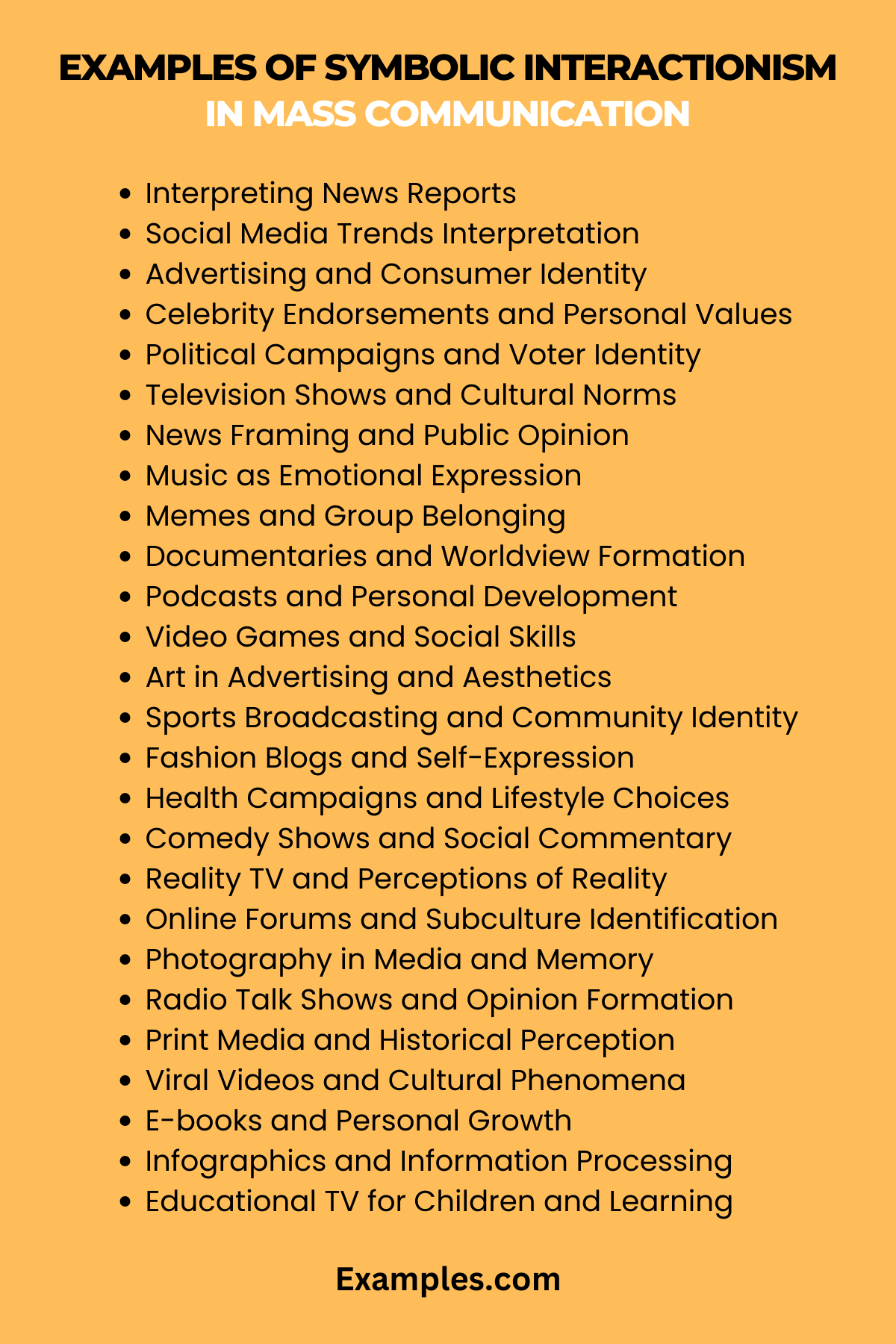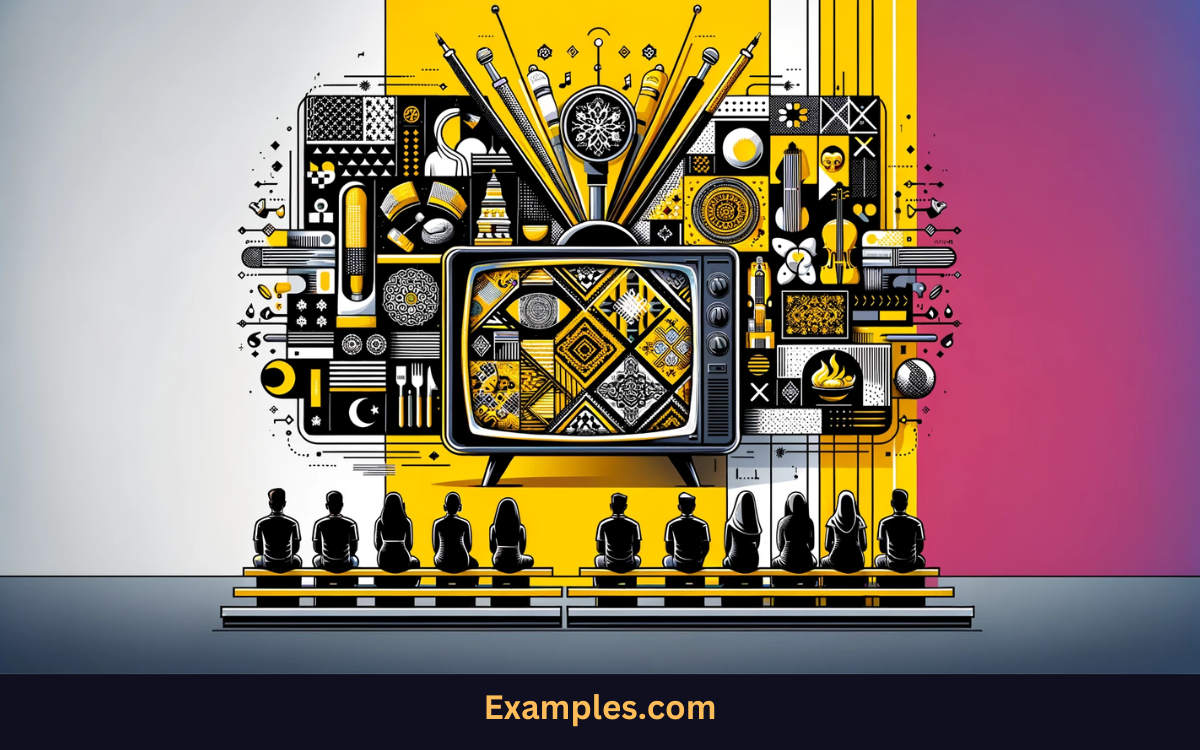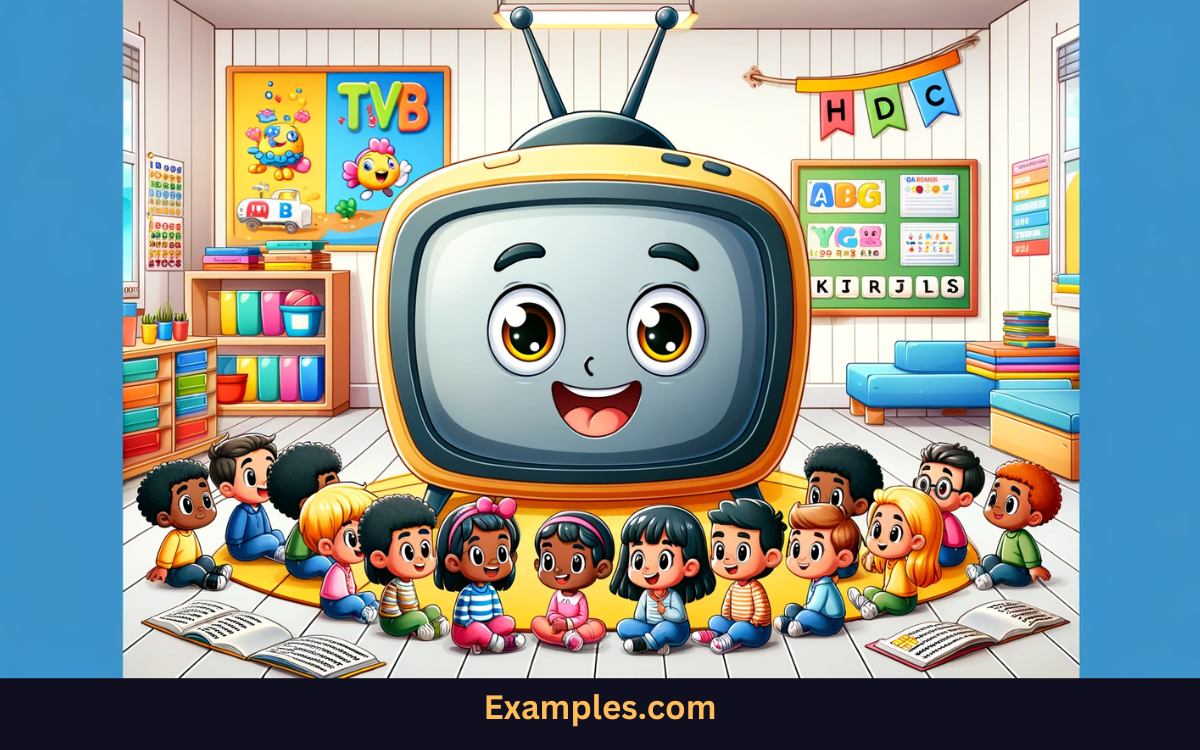Symbolic Interactionism in Mass Communication
Discover the intricate world of Symbolic Interactionism in Mass Communication with our comprehensive guide. This theory, crucial in understanding how individuals interpret media symbols, plays a pivotal role in shaping public perception and communication strategies. From Mass Communication in Real Life to Journalism Mass Communication, this guide, enriched with real-world examples, offers valuable insights for students, educators, and media professionals.
What is Symbolic Interactionism in Mass Communication?
Symbolic Interactionism in Mass Communication is a theory that explores how people use symbols – like language, signs, and images – to create meaning and form their social reality. It emphasizes the interactive nature of communication and how individual interpretations influence understanding and behavior in the context of mass media. This approach is fundamental in analyzing and understanding various aspects of media, including Mass Communication Characteristics and the Uses & Benefits of Mass Communication. It provides a unique lens to examine how media messages are constructed, interpreted, and influence the audience, highlighting the crucial role of personal and collective interpretation in the realm of mass communication.

History of Symbolic Interactionism in Mass Communication
The concept of symbolic interactionism in mass communication has its roots in the early 20th century, with significant contributions from sociologists like George Herbert Mead and Herbert Blumer. Mead’s work on the development of the self through social interactions laid the groundwork, while Blumer coined the term ‘symbolic interactionism.’ In mass communication, this theory gained prominence as researchers began to explore how media symbols (like images, language, and sounds) shape public perception and social behavior. The evolution of media technologies, from print to digital, has further expanded the scope of symbolic interactionism, demonstrating its relevance in understanding how meaning is constructed and shared in society.
What is the Best Example of Symbolic Interactionism in Mass Communication?
Symbolic interactionism, a critical concept in sociology and communication, holds that people develop and rely upon the symbolic meaning of words, actions, and objects for interaction. A prime example of symbolic interactionism in mass communication is the use of emojis in digital communication. Emojis have evolved from simple smiley faces to a complex array of symbols that convey a range of emotions, ideas, and responses. They act as stand-ins for facial expressions and gestures in face-to-face conversations, allowing individuals to express emotions and reactions in a non-verbal, yet universally recognizable way. This illustrates how symbols (emojis, in this case) acquire specific meanings and influence how people interact and communicate in the digital realm.

30 Examples of Symbolic Interactionism in Mass Communication
Symbolic Interactionism in Mass Communication explores how individuals create meanings through their interactions with media. It underscores the role of interpretation in understanding media content, highlighting the dynamic between media messages and audience perception. This approach is critical in Mass Communication in Real Life and Public Relations Mass Communication, influencing how messages are crafted and received.

- Interpreting News Reports: Viewers construct meanings based on their backgrounds.
Example: “This news about the economy makes me think about job security in my field.” - Social Media Trends Interpretation: Users apply personal experiences to understand trends.
Example: “This viral challenge reminds me of our community’s resilience.” - Advertising and Consumer Identity: Ads contribute to identity formation.
Example: “This ad makes me feel part of an adventurous community.” - Celebrity Endorsements and Personal Values: Celebrities symbolize certain values.
Example: “Her endorsement of the product aligns with my environmental consciousness.” - Political Campaigns and Voter Identity: Campaigns shape voter self-concept.
Example: “This candidate’s message resonates with my beliefs about healthcare.” - Television Shows and Cultural Norms: Shows reflect and shape societal norms.
Example: “This TV drama challenges traditional notions of family.”

- News Framing and Public Opinion: News frames influence audience opinions.
Example: “The way this issue is reported affects how I see the government’s role.” - Music as Emotional Expression: Music connects with personal emotions.
Example: “These lyrics perfectly capture what I’m feeling right now.” - Memes and Group Belonging: Sharing memes creates a sense of belonging.
Example: “Posting this meme shows I’m part of this online community.” - Documentaries and Worldview Formation: Documentaries shape perceptions of reality.
Example: “This documentary opened my eyes to environmental issues.” - Podcasts and Personal Development: Podcasts contribute to self-improvement.
Example: “Listening to this podcast inspires me to be more productive.” - Video Games and Social Skills: Gaming impacts interpersonal skills.
Example: “Multiplayer games help me improve my teamwork abilities.” - Art in Advertising and Aesthetics: Artistic ads shape taste.
Example: “This ad’s artistic quality makes me appreciate modern design.” - Sports Broadcasting and Community Identity: Sports create collective identities.
Example: “Watching our team play makes me feel connected to my city.” - Fashion Blogs and Self-Expression: Blogs influence personal style.
Example: “This fashion blogger inspires me to experiment with my look.” - Health Campaigns and Lifestyle Choices: Campaigns affect health decisions.
Example: “This health message motivates me to start exercising.” - Comedy Shows and Social Commentary: Comedy reflects societal issues.
Example: “This comedian’s jokes highlight important social injustices.” - Reality TV and Perceptions of Reality: Reality TV shapes understanding of real-life situations.
Example: “This show makes me think differently about fame.” - Online Forums and Subculture Identification: Forums foster subculture membership.
Example: “Participating in this forum reinforces my interest in sustainable living.” - Photography in Media and Memory: Images evoke personal memories.
Example: “This photo reminds me of my childhood vacations.” - Radio Talk Shows and Opinion Formation: Talk shows influence listener viewpoints.
Example: “This discussion on the radio shapes my view on local politics.” - Print Media and Historical Perception: Newspapers impact understanding of history.
Example: “Reading historical articles changes how I see our national progress.” - Public Service Announcements and Social Responsibility: PSAs promote civic engagement. ?
Example: “This PSA makes me want to volunteer in my community.” - Viral Videos and Cultural Phenomena: Viral content reflects cultural trends.
Example: “This viral dance symbolizes the joy in our culture.” - E-books and Personal Growth: Digital books facilitate learning.
Example: “Reading this eBook expands my knowledge about different cultures.” - Infographics and Information Processing: Infographics simplify complex concepts.
Example: “This infographic helps me understand climate change better.” - Educational TV for Children and Learning: Children’s shows aid development.
Example: “This educational program teaches my child valuable life lessons.”

- Social Media Activism and Empowerment: Online movements empower individuals.
Example: “Joining this online campaign makes me feel like I’m making a difference.” - Mobile Apps and Lifestyle Management: Apps assist in daily life organization.
Example: “This app helps me manage my time more efficiently.” - Virtual Reality and Experiential Learning: VR provides immersive experiences.
Example: “Experiencing this virtual world teaches me about different cultures.”
Role of Symbolic Interactionism in Mass Communication
Understanding Media as Symbolic Systems
Symbolic Interactionism views media as a system of symbols that people use to make sense of the world. This perspective is crucial in understanding how individuals interpret media messages and symbols based on their personal experiences and social interactions.
Media as a Tool for Identity Formation
Media plays a significant role in the process of identity formation and self-concept. People often use media content to construct their identities, aligning themselves with certain beliefs, values, and communities represented in the media.
Interpretation of Media Messages
This theory emphasizes the subjective interpretation of media messages. Different audiences may interpret the same media content in varied ways, influenced by their backgrounds, experiences, and social contexts.
Influence on Social Behavior
Symbolic Interactionism suggests that media can influence social behaviors and interactions. For instance, the portrayal of certain social norms and values in media can shape the audience’s behavior and expectations in social settings.
Role in Public Opinion Formation
Media, as a platform for symbolic interaction, plays a pivotal role in shaping and reflecting public opinion. The portrayal of issues and events in media can influence the public’s perception and attitudes towards them.
Impact on Cultural Perceptions
Media is a key player in shaping cultural perceptions and norms. It often reflects and reinforces societal values, thereby playing a significant role in the cultural socialization process.
Importance of Symbolic Interactionism in Mass Communication
- Understanding Social Behaviors: Symbolic interactionism plays a crucial role in mass communication by providing a framework to understand how people interpret and respond to media content based on their individual and societal symbols.
- Media Representation and Perception: This theory helps analyze how different groups perceive media representations, shaping their realities and behaviors.
- Role of Symbols in Communication: It emphasizes the importance of symbols, such as language and images, in creating meanings within media texts.
- Interactive Media Consumption: With the rise of interactive media, symbolic interactionism becomes essential to understand how audiences actively interpret and engage with content.
- Influence on Public Opinion: The theory provides insights into how media can shape public opinion through the strategic use of symbols and narratives.
- Cultural Context in Communication: Symbolic interactionism underlines the significance of cultural context in determining how media messages are received and interpreted.
- Impact on Identity Formation: The theory explores how mass communication influences individual and collective identities through symbolic interaction.
- Media’s Role in Socialization: It sheds light on how media serves as an agent of socialization, imparting values and norms to its audience.
- Adaptability to New Media Forms: The adaptability of symbolic interactionism to various forms of media, including digital and social media, makes it a versatile tool in mass communication studies.
- Analyzing Audience Segmentation: This approach helps in understanding the diverse interpretations of media content among different audience segments.
- Enhancing Media Strategies: For media practitioners, symbolic interactionism offers valuable insights into tailoring content to resonate with various audiences.
- Ethical Considerations in Media: The theory encourages ethical media practices by highlighting the responsibility of media in shaping societal perceptions.
- Evolving Media Trends Analysis: Symbolic interactionism is instrumental in analyzing evolving trends and patterns in media consumption and interpretation.
- Impact on Policy and Regulation: Understanding media influence through this lens can inform policy and regulation related to media and communications.
- Media Literacy and Education: It plays a significant role in media education, teaching individuals to critically interpret and interact with media.
How to Use Symbolic Interactionism in Mass Communication
- Content Creation: Utilize symbolic interactionism to create content that resonates with the audience’s cultural and social symbols.
- Audience Analysis: Apply the theory to analyze how different audience groups interpret media symbols and messages.
- Media Strategy Development: Use insights from symbolic interactionism to develop media strategies that effectively communicate with targeted audiences.
- Critical Media Analysis: Employ the theory for critical examination of media texts and their impact on audience perceptions and behaviors.
- Cultural Sensitivity in Media: Ensure cultural sensitivity in media representations by understanding the symbolic meanings attributed to different cultural elements.
- Interactive Media Design: Incorporate elements in interactive media that engage users in meaningful symbolic interactions.
- Feedback Mechanisms: Implement feedback mechanisms to understand how audiences interpret media symbols and narratives.
- Social Media Engagement: Use symbolic interactionism to craft engaging and relevant content for social media platforms.
- Advertising and Marketing: Apply the theory in advertising to create symbolically rich and appealing messages.
- Educational Content Development: Develop educational content that effectively uses symbols and narratives understood by the target audience.
- Media Ethics Education: Incorporate the theory in media ethics education to highlight the importance of responsible use of symbols.
- Policy Advocacy: Use insights from symbolic interactionism to advocate for policies that acknowledge the power of media in shaping social realities.
- Public Relations Practices: In public relations, apply the theory to understand how organizational symbols are interpreted by the public.
- Journalistic Reporting: Employ symbolic interactionism to enhance journalistic reporting by recognizing the symbolic significance of news elements.
- Media Research: Conduct research on media consumption and interpretation through the lens of symbolic interactionism.
Symbolic interactionism is a key theoretical framework in Mass Communication, offering profound insights into how individuals and societies interact with and interpret media symbols. Its application extends from enhancing content creation to shaping effective communication strategies, making it an indispensable tool in understanding and navigating the complex landscape of Mass Communication in a Digital Age.



